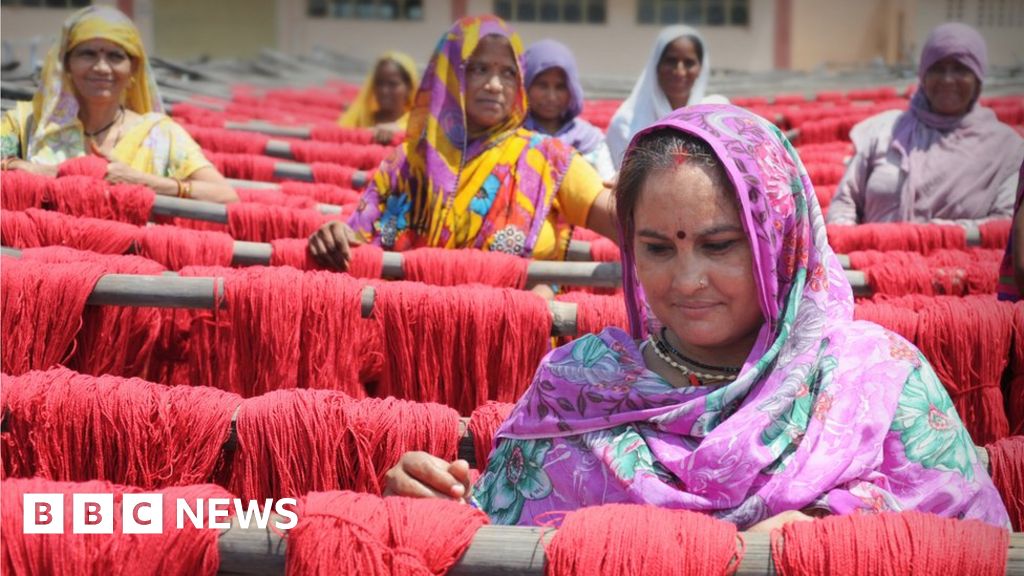- Arvind's Newsletter
- Posts
- Arvind's Newsletter-Weekend Edition
Arvind's Newsletter-Weekend Edition
Issue No #1040
1.India’s stock market rally fuels rush of IPOs, reports Financial Times
India’s surging stock market is fuelling a rush of initial public offerings, but some investors are becoming worried about the poor performance of many of Mumbai’s listings.
Investors and analysts said the upbeat outlook for India’s economic growth, improved corporate earnings and strong demand from foreign investors are providing a tailwind for deals, with Dealogic data showing 21 IPOs raised about $678mn in January, compared with $17mn a year ago.
More listings are expected: a total of 66 companies have filed listing documents with Indian regulators, according to brokerage IIFL. But analysts warn that a 20 per cent rise in India’s benchmark Sensex stock index over the past 12 months has pushed valuations for the country’s equities to historically elevated levels.
The slate of anticipated deals includes Ola Electric — expected to be among the largest Indian IPOs of the past two years — as well as fintech group MobiKwik.
That renewed enthusiasm helped push the total market capitalisation of stocks listed in India to roughly $4tn, overtaking Hong Kong to become the world’s seventh-largest market. Last year, Indian IPOs raised almost $8bn.
2.Private Equity companies continue to raise funds to invest in India
Private equity group, KKR, raised a record $6.4 billion to invest in infrastructure in Asia — but is likely to avoid China, and would focus on India, Singapore and South Korea reported Financial Times. At same time Bain Capital will invest $7 billion in India over the next three to five years and increase local hiring reported Bloomberg.
3.How ancient carpet weaving industry in Kashmir, India is using AI not to displace artisans but to support them
An ancient symbolic code lies behind the intricate patterns of Kashmir's traditional handwoven carpets and rugs.
Called talim, the code has been used for hundreds of years to design carpets and convey information to weavers.
"This innovation in handmade carpets is not to disrupt the essence of artistic carpets, it's just to speed up the process - designs being available now at a speed," says Mehmood Shah, the director of Handloom & Handicrafts for the government of Jammu and Kashmir.
The latest innovation comes from technology firms that are applying artificial intelligence to the process. Tech companies are training an artificial intelligence (AI) system to understand the talim code by showing it pictures of carpets and lines of talim code.
4.Apple's Headset Arrives
Apple's Vision Pro headset launches today, the company's first major product release since the Apple Watch debuted in April 2015. Starting at $3,500, the headset boasts compatibility with more than 1 million apps and games, including Disney+, PGA Tour Vision, and Microsoft 365 productivity tools.
Dubbed a "spatial computing" device in an effort to distinguish it from competitors, it allows users to switch between full virtual reality and augmented reality while also allowing users to see through to the front of the headset. The device comes equipped with 14 cameras, a lidar sensor, six microphones, an illuminator that can scan faces, and more. The headset is expected to generate $1.4B in revenue this year, a fraction of the almost $400B Apple anticipates in fiscal year 2024.
Competitors like Meta have expressed optimism that Apple's launch may reinvigorate interest in their cheaper alternatives (it wants to be the Android of the AR/VR world). Google and Samsung are reportedly working on a headset for release by 2025.
5.Southeast Asia is increasingly turning to floating solar panels as land for renewable energy production grows scarce.
Solar energy is cheap, but has a large footprint, and much of Southeast Asia is densely populated. Analysis suggests the region has 500 megawatts of floating solar, about 2% of its total. The figure will grow 6% in the next few months and “floatovoltaics” could make up a tenth of South Asian solar capacity by 2030. The technology is expensive, but the floating arrays can have higher output as water offers natural cooling. New Scientist reported that covering 30% of the world’s reservoirs in solar panels could provide enough electricity to power the U.S. twice over.
6.The World Health Organization predicted that annual cancer diagnoses will rise 77% by 2050.
The largest increase in terms of absolute numbers will be in richer nations, where populations are older — cancer is overwhelming a disease of aging — but the largest relative increase will be in poorer countries, as life expectancy improvements and growing incomes mean greater obesity levels and tobacco and alcohol use.
Diagnosis and treatment disparities will mean the burden on developing nations will be disproportionate, although the incidence of any particular cause of death going up necessarily means other causes of death must go down: People living long enough to die of cancer means they have not died of anything else.
7.How motherhood hurts career. The Economist analyses based on a new report.
A new study estimates the impact of motherhood on careers in 134 countries.Changes in parents’ employment status after their first child is born make it clear that this job falls overwhelmingly to women. Some mothers return to full-time work after a few months or years. Others balance caring for children with part-time employment.But many do not rejoin the workforce at all, even a decade on. This has been dubbed the “motherhood penalty”.
When things are shitty we change them”, read a placard held aloft at a “March of the Mummies” protest in Britain in October 2022. “Childcare shouldn’t cost our future”, declared another. The message fell on fertile ground in Westminster: six months later the Conservative government announced plans to expand subsidies for early-years child care. The first of a bundle of measures will come into effect in April.
The cost of child care can be an imposing barrier to work. For many British women it is especially daunting. For one in ten it exceeds their take-home pay, according to a survey of 24,000 parents by Pregnant then Screwed, an advocacy group. Only in America, Ireland and New Zealand do child-care costs take up a greater share of parents’ net household income across the OECD, a club of mostly rich countries. But almost everywhere women’s careers suffer after they become parents.
Whereas around the world 95% of men aged between 25 and 54 are in the labour force, the figure for women of the same age is just 52%. Little has been understood about how much of this gap is explained by mothers leaving formal work after giving birth. But a group of academics from the London School of Economics (LSE) and Princeton University has now amassed a trove of data to measure the effect in 134 countries, home to 95% of the world’s population. Building on the work of Claudia Goldin, a Harvard economist who was awarded last year’s Nobel prize in economics for her research into gender inequality in the labour market, the authors compare mothers and fathers with childless people of similar age, education, marital status and so forth. Mothers’ labour-market participation falls after childbirth in almost every country in the study.
The authors define the “motherhood penalty” as the average amount by which a woman’s probability of being employed declines during the ten years after the birth of her first child. On average 24% of women leave the labour force in the first year. Five years later, 17% are still absent. After ten years, 15% are.
Many women in rich countries worry about another problem: being paid less than men. But the two are linked: gaps in employment tend to limit a woman’s lifetime earnings. Being out of work can mean delaying or missing out on promotions and other career opportunities, and can make it harder to find a job.
The effect of motherhood on employment varies widely between countries. In the rich world, 80% of the gap between male and female labour-force participation is explained by women dropping out after the birth of their first child. By contrast, in the poorest countries motherhood explains only about 10% of the gap. There, women tend to leave the labour market upon marrying, usually well before their first child is born. In Mauritius and Zambia, for example, marriage explains nearly half of the participation gap.
In middle-income countries women are more likely to work after they wed, but many quit permanently after becoming mothers. For example, in Latin America, 38% of working women leave the labour force after having a child, and 37% are still out a decade later. As a result, the overall employment gap in these countries is little different from that in low-income ones.
Many mothers leave work because doing so makes economic sense. “There is no point in going back four or five days a week, because I would have about £100 [$127] a month left after child-care,” says Alison Greatorex, a mother in Surrey who has not returned to work since the birth of her two-year-old child. Cultural norms also have an effect. The International Labour Organisation, a UN agency, estimated that in 2018 606m working-age women across the world were unable to consider employment because of family care duties, against only 41m men. In a previous, smaller international study, the LSE and Princeton authors found that women whose mothers stayed at home were more likely to do the same.
With labour markets in the rich world and many other countries tight, many policymakers are seeking ways to get mothers back to work. Like Britain, Austria, Germany and the Netherlands are all planning to reform child-care subsidies or parental leave. In 2021 Canada began offering subsidised child care for just C$10 ($7.50) per day. Japan is restructuring tax incentives to nudge women into work. Last year Jordan set a goal of doubling women’s labour-force participation by 2033, and has set about expanding child-care subsidies for working mothers.
Research published by the World Bank last year looked at 95 countries and found that women’s labour-force participation rose 4%, on average, five years after a country enacted child-care laws. But interventions can also go wrong. Parents in Canada and Germany struggle with long waiting lists for nursery places. A previous expansion of Britain’s child-care entitlements led to a reduction in supply because the government, newly responsible for how much providers were paid, was too stingy. Shifting high costs to taxpayers, though, may strip the system of useful incentives to control them.
Regardless, 4% is a small effect relative to the yawning gap between men’s and women’s employment. And women’s participation in labour markets is close to flatlining. According to the World Economic Forum, at the current rate of change it would take another 170 years for the global economic gender gap to close.






